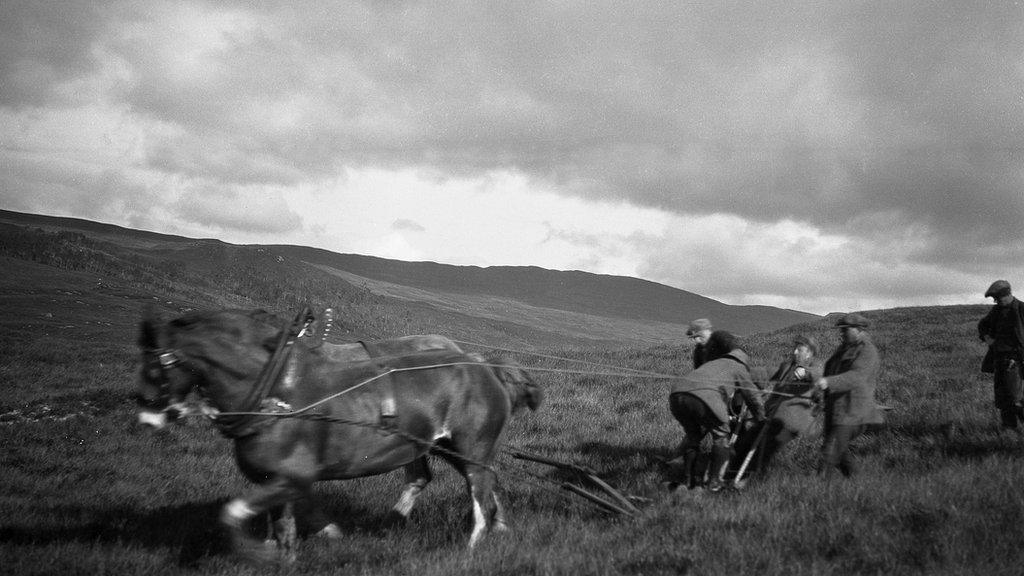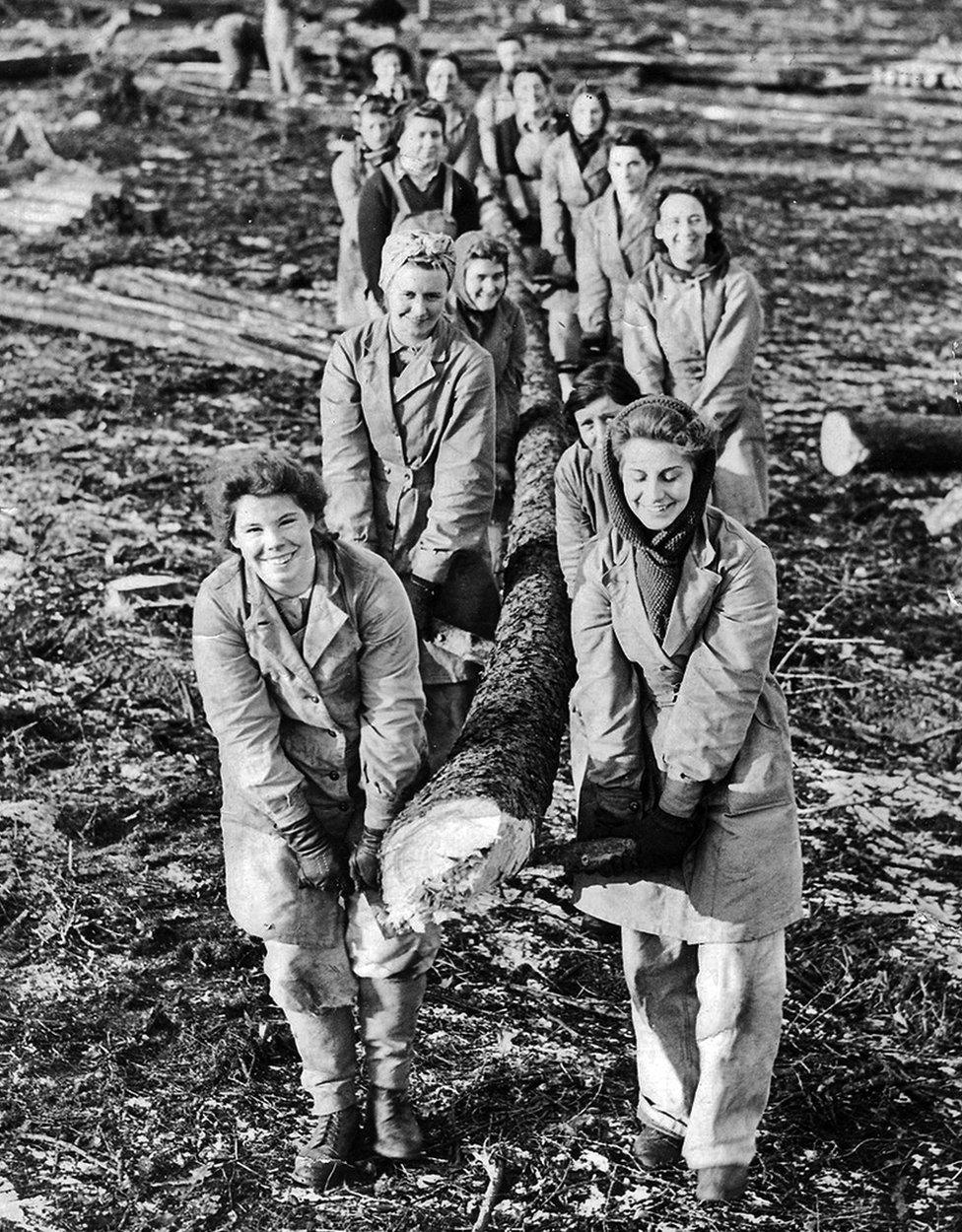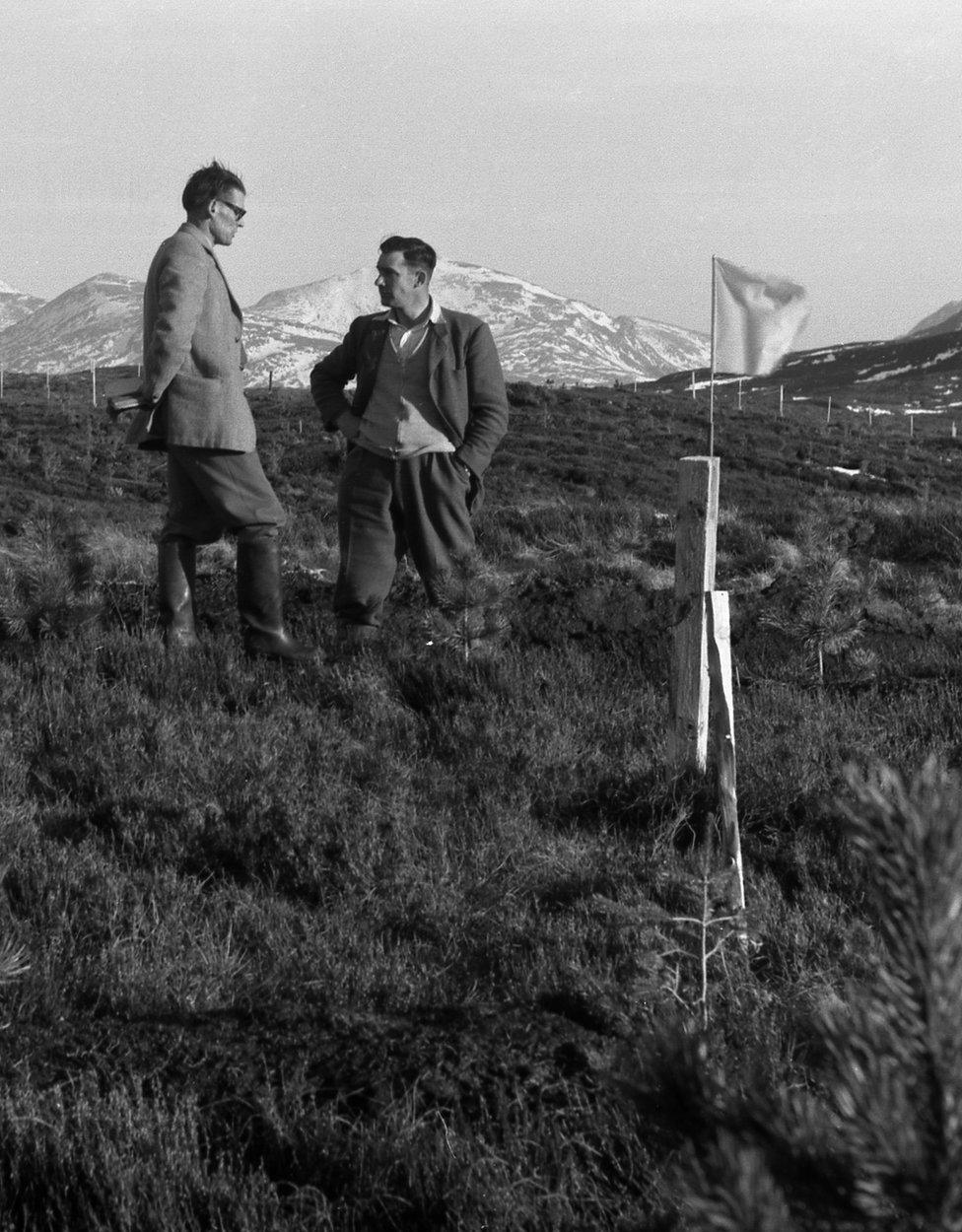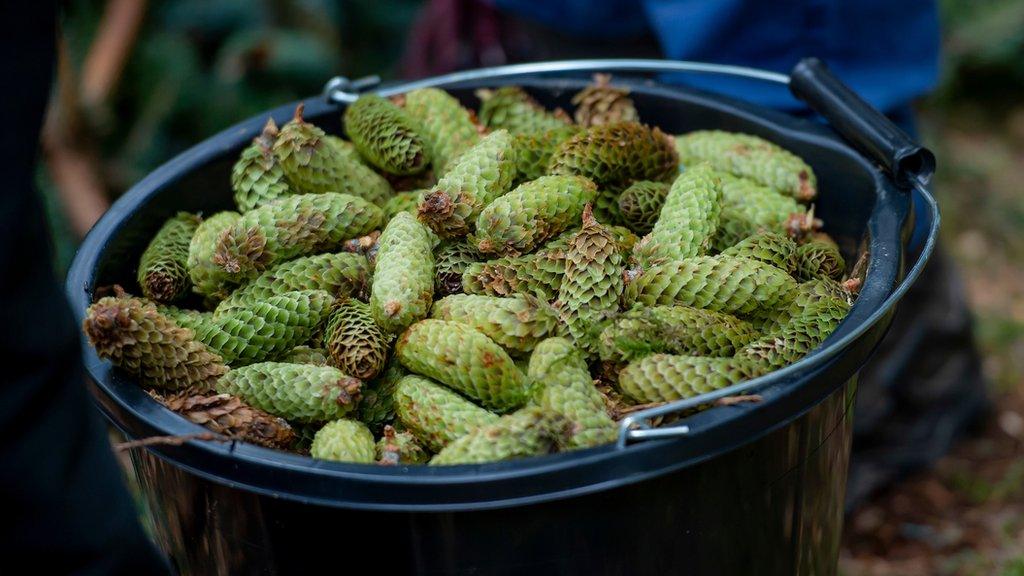Scotland marks 100 years of public forestry
- Published

Horses being used in work to plant trees in the 1920s
The first tree of Scotland's publicly-owned forestry was planted 100 years ago this month.
The Forestry Commission was formed in September 1919 with an aim of preventing a repeat of a timber crisis which took place during World War One.
The war effort put "huge demands" on Britain's home-grown timber, while imports from overseas were crippled by German U-boat attacks on shipping.
As a result, the commission was launched to create state-owned woods and forests across the UK.


Members of the Women's Timber Corps, dubbed Lumberjills, at work during World War Two

The first Forestry Commission tree in Scotland was planted by the organisation's first chairman, Highland laird Simon Joseph Fraser, the 14th Lord Lovat.
But he had been defeated in the race to plant the UK's first Forestry Commission tree by fellow commissioner Lord Clinton.
Lord Clinton planted his tree at Eggesford in Devon - although it was said that he prevailed because the distance he had to travel was much shorter than Lord Lovat's trip to Monaughty near Elgin in Moray.


Two commissioners survey a site of new tree planting in the 1950s

This year has seen the end of the Forestry Commission in Scotland, to be replaced by two new Scottish government agencies - Forestry and Land Scotland and Scottish Forestry.
They were created in April this year after powers over forestry were fully devolved to the Scottish Parliament.
Rural Economy Secretary Fergus Ewing said forestry was as important today as it was 100 years ago.
He said: "Forestry in Scotland has never played such an important role in sustaining livelihoods, communities, habitats and species and in delivering so many other environmental, social and economic benefits.
"Marking this centenary was a gesture of thanks both to the farsighted people who established the commission and to the generations of foresters - men and women - who have planted, nurtured and developed Scotland's forests and woodlands over the past century."

Seed cones gathered for modern day tree planting
All images are subject to copyright.